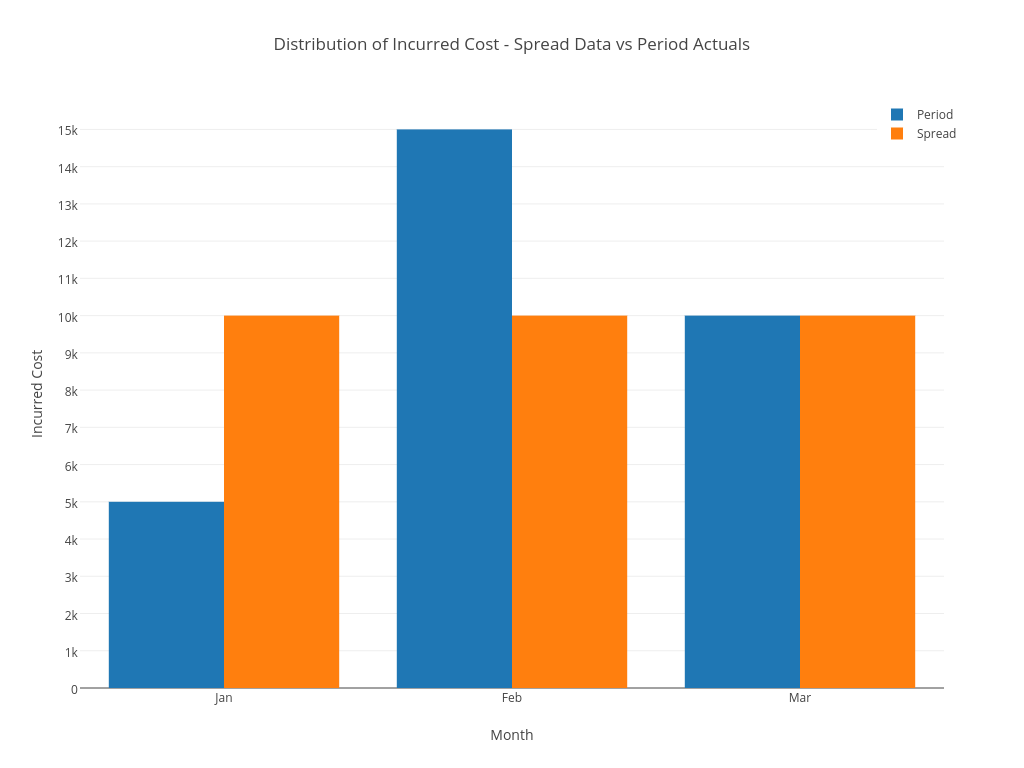Primavera Analytics and P6 Financial Periods
Primavera Analytics supports financial periods – but what does that actually mean?
P6 Time Distributed Data
P6 has two main sources of time-distributed data, spread data and financial period actuals. The main difference between these is that spread data is calculated, while financial period data is stored. This difference impacts both how accurate the data is and how flexibly it can be viewed.
Accuracy
The fact that the spread data is calculated means it is only an approximation of reality. Oversimplifying somewhat, the time-distributed values are calculated by dividing the total value by the total duration. If I have a resource assignment on a three month activity with $30,000 of actual cost, the spread will show me that I did $10,000 each month, even if in the event I actually incurred $5,000 the first month, $15,000 the second month, and $10,000 the third month.

By contrast, values in financial period actuals are not calculated, they are stored. If I have monthly financial periods and did the same thing, the financial period data will accurately represent when the cost was incurred. It doesn't need to guess – it knows exactly what the amounts were because I told it when I stored that information into the period actual for each month. Sometimes you need this accuracy, especially when you are dealing with cost.
Flexibility
Financial periods must be defined in advance, and the period actuals must be allocated to these predefined periods. If my financial periods are by month but I want to see it by week instead, I can’t do that – at least, not without giving up the accuracy that makes financial period actuals attractive to begin with. I can still view it by quarter or by year – I can reduce the granularity without sacrificing accuracy, but not increase it.
On the other hand, the fact that spread data is calculated means that you have flexibility in how you want to look at the spread data. If I am looking at the spread data by month but I want to see it by week instead, I can do that – it just recalculates.
Primavera Analytics
Primavera Analytics supports financial periods as a dimension on the spread. That means that information in the spread data can be viewed by financial periods. You can filter the spread data by financial period. You can group the spread data by financial period.
What you can’t do is report on financial period actuals – at least, not out of the box. The Primavera Data Warehouse does not store financial period actuals at all. In order to get this to work, you would need to alter the PDW schema and customize both the Star ETL process and the OBIEE catalog.
P6-Reporter
Depending on the use case, our P6-Reporter (previously EP-datawarehouse) might be a suitable alternative or supplement to the Primavera Data Warehouse that is a part of Analytics. Our P6-Reporter captures financial period actuals out of the box. Using this information in Primavera Analytics is possible. It would still require customizing the OBIEE catalog, but no schema or ETL changes would be required.
For more information please contact us or take a look at our product pages for P6-Reporter and Primavera Analytics.
About the Author
Dan MacMillan - Integration Specialist
Dan has been developing software professionally for over 20 years, joining Emerald Associates in 2003. His experience includes accounting, supply chain management, drilling program management, project management, and contract management integration, automation and dashboarding elements.
Dan learned how to program computers as a child by watching his older brother making games on his Commodore 64. His interest in computers and programming drove him to teach himself BASIC, 6502 and 80386 assembly language programming, and then C so that he could write hobby programs. Moving from hobby to professional, Dan did his computer science studies at SAIT in Calgary.
In his first professional programming job, Dan had the autonomy to make mistakes, live with them, learn from them and fix them. He realized that quality in software derives, not from what it does, but from the way it is written, and yields benefits such as having fewer bugs, and being easier to read and change. On that project, Dan transitioned from programming hobbyist to craftsman with a “quality first” focus in his work.